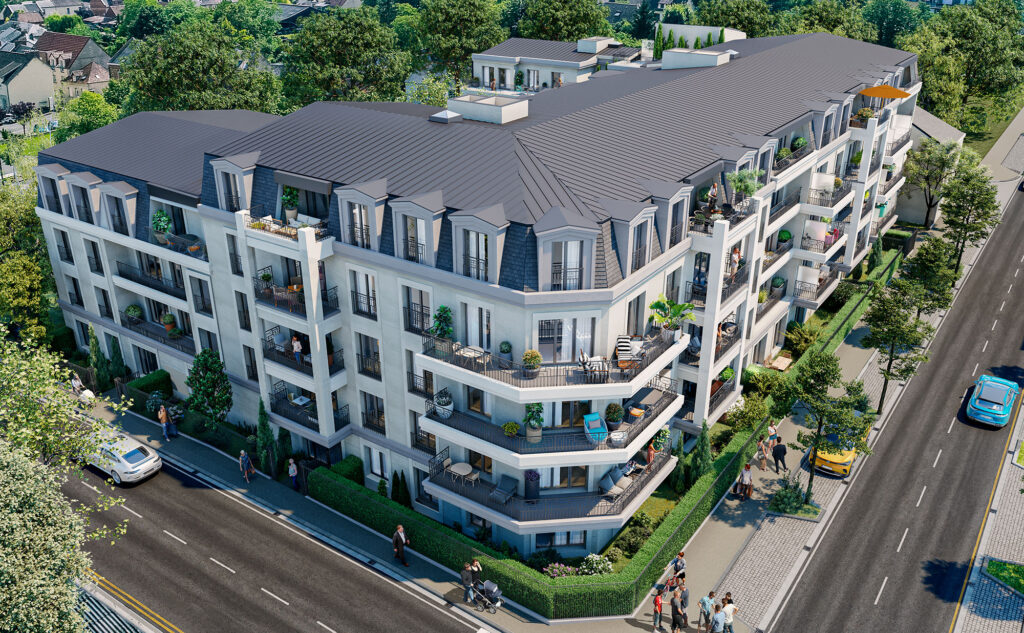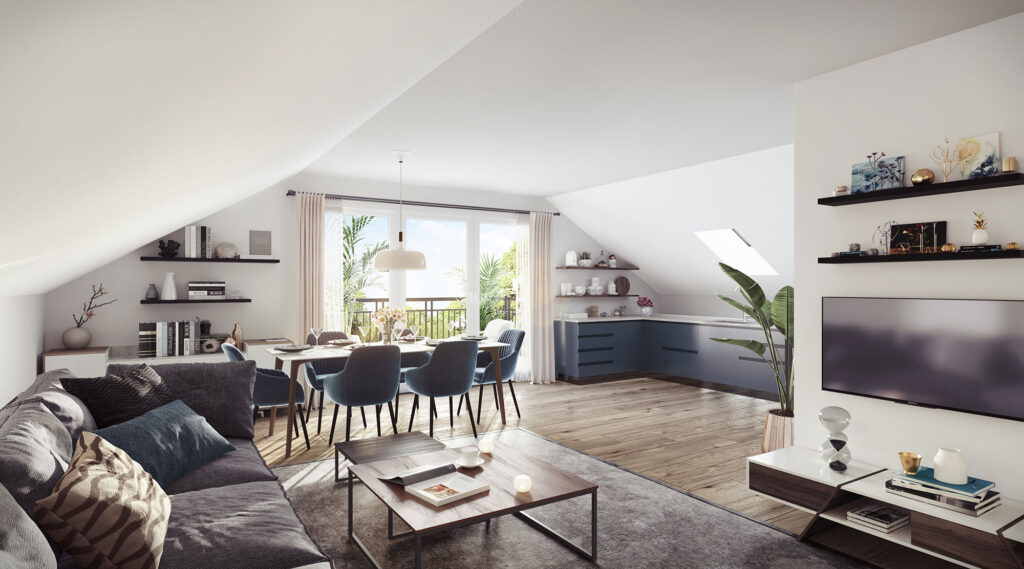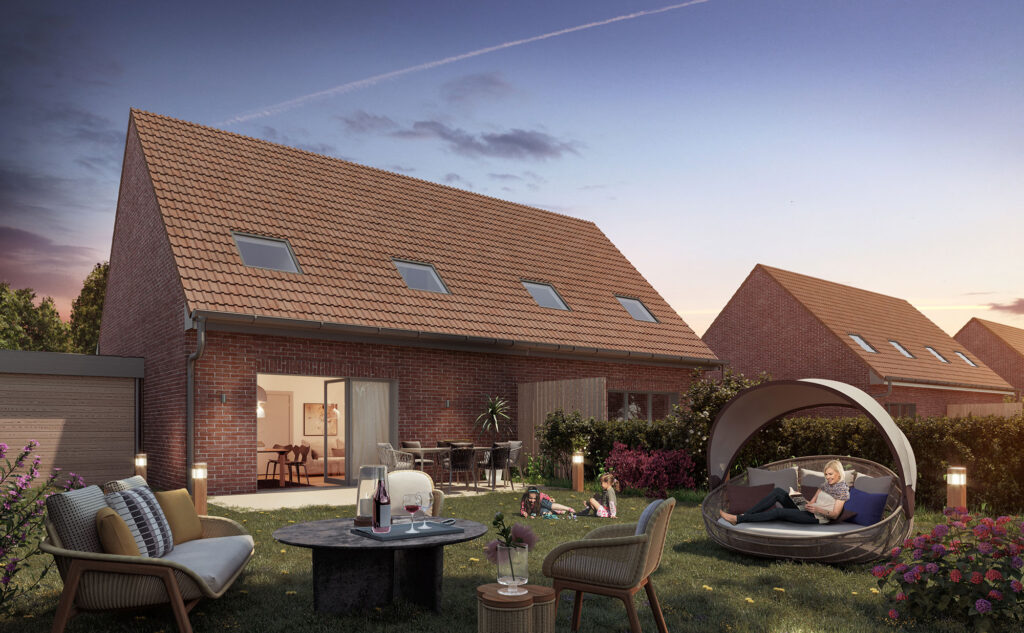The real estate sector is one of those fields in which digitalization and the use of cutting-edge technologies have become inevitable. Recent years have seen the democratization of 3D modeling among real estate professionals.
New ways of exploiting this type of 3D technology have been unveiled: 3D plan design, 3D orbital models, 3D perspective, 360° virtual tours, etc. In this article, discover an overview of future trends in 3D modeling for real estate.
Future trends in 3D modeling for building performance

3D modeling is at the heart of innovations in real estate. Its importance is not limited to architecture or building design, but extends to building performance. New trends are emerging in 3D modeling.
BIM or Building Information Modeling
Although the beginnings of BIM can be traced back to the 1960s, its real operationalization dates back only some twenty years. Yet BIM is one of the future trends in 3D modeling.
BIM (Building Information Modeling) is a 3D digital construction process that centralizes all the information and tools needed to plan, design and manage buildings and infrastructures.
This information may include :
- programming the real estate project ;
- its feasibility ;
- design details;
- its documentation ;
- performance analysis and simulation;
- logistics construction ;
- maintenance operation ;
- any renovations ;
- etc.
In the BIM process, all those involved in construction can create, fill in and use the digital mock-up containing information about the infrastructure concerned.
In addition, the use of BIM brings many benefits, not least a reduction in costs, thanks to better communication between the players involved. In fact, the use of BIM is not only beneficial for real estate professionals, but also has an impact on all those involved in construction: civil engineers, architects, network technicians, town planners and so on.
BIM also enables construction techniques to be optimized, thanks to the ability to visualize the work of manufacturers, material suppliers and builders in general, both globally and in detail.
Aerial photogrammetry
3D scanning is the technique of capturing and measuring a physical object using a 3D scanner. It is much in demand in the construction and real estate sectors.
Photogrammetry is a variation on this technique, in which the various reliefs are reconstructed using photography.
When photogrammetry is carried out from the air using a drone and sophisticated equipment, it offers even greater precision: ground and roof plans, facade plans, wall thickness, etc.
The particularly precise data provided by the 3D aerial scanning procedure can be integrated into software solutions dedicated to 3D modeling. Thisoptimizes the 3D modeling process in the studio.
The final 3D rendering is realistic: a building perfectly identical to the one scanned, in which the dimensions, reliefs, proportions of spaces and perspectives are respected.
Today, aerial photogrammetry is a revolutionary method for construction and renovation, making it one of the future trends in 3D real estate modeling.
Combining 3D modeling with Machine Learning
Artificial intelligence (AI) is at the heart of current technological advances. The preferred tool for reproducing human cognitive abilities, AI can be categorized into several branches, including Machine Learning (ML).
The precise function of ML is to enable a computer system to perform complex tasks on its own, such as the analysis of large quantities of data, based on algorithms and statistical models.
In the specific field of building and real estate, ML can be used to automatically analyze the data obtained from 3D scanning, which can help to identify trends and anticipate potential problems, thus improving site safety.
Coupled with the 3D modeling solution, it makes the data perfectly accessible and can be studied in great detail, making it an invaluable tool for informing customer decisions.
All these advantages are the reasons why, soon, this revolutionary combination of technologies will have unrivalled success in terms of construction and real estate development, and will become one of the future trends in 3D real estate modeling.
Future trends in 360° virtual tours

The customer experience is crucial to the success of real estate development. That's why most advances in 3D tools for real estate take immersive solutions into account.
360° virtual tours
A virtual tour is an interactive 3D presentation of a property. It consists of linked 360° images. The 360° virtual tour process gives visitors direct access to any built environment, wherever they may be.
Users can navigate in 3D space by clicking or tapping on their screen. They can view up or down, side to side, just as they would in real life. There's no visual distortion in a 3D virtual tour, and moving from one point to another is seamless.
What makes 3D virtual tours different from general tours is that they enable you to visit the site in depth. The success of the 360° virtual tour experience generally hinges on the optimization of the 3D plan, created in most cases by 3D modeling.
When successful, the 360° virtual tour is an undeniable asset for real estate marketing and communication, speeding up the sales process. The practicality of this technology is at the root of its success, so it remains at the forefront of future trends in 3D real estate modeling.
Virtual reality (VR)
Virtual reality (VR) is an immersive technology that lets you visit an artificial digital universe. With virtual reality headsets now very much in vogue, this technology is reaching more and more users.
Usually made possible by 3D modeling, virtual reality can be exploited in a number of ways by real estate professionals.
Virtual presentation of a property
Virtual reality for real estate marketing is used to promote and present properties at their best.
It differs from virtual tours in that, instead of using photographs, it immerses visitors in a virtual environment using a VR headset.
Guided tours are similar to promotional videos, most often in the form of 360° videos or virtual, interactive experiences. All of these options enable real estate agents to market their property projects more confidently and conveniently.
Staging and virtual visualization
Marketing a property that has not yet been built is a difficult challenge. With virtual reality 3D visualization of apartments or houses, you can promote a property long before it's built.
The absence of physical objects is no longer an obstacle to sale. The same applies to the absence of real furniture inside apartments.
Thanks to immersive VR technologies, you can showcase interior and exterior designs and market lots before they're even built in the physical world.
Augmented reality (AR)
One of the most innovative developments in real estate in recent years, and one that will certainly continue to make the list of real estate 3D modeling trends, is the integration of augmented reality (AR) into the sector.
This is a method for superimposing a virtual image on a real environment.
AR models reduce the need for costly physical models and streamline the revision process, as changes can be made quickly and visualized instantly. Buyers can virtually walk around the model and interact with it, enabling them to better appreciate architectural features and design nuances.
The integration of AR into real estate marketing, particularly for visualizing buildings and interiors, could transform the entire sector.
These advantages redefine the way real estate professionals and potential buyers interact with properties, even before they are built or visited.
Augmented reality facilitates decision-making and makes the experience of visiting a property more exciting, so for the next few years it will continue to be part of future trends in 3D real estate modeling.
Let us take you on an immersive 3D virtual tour.








